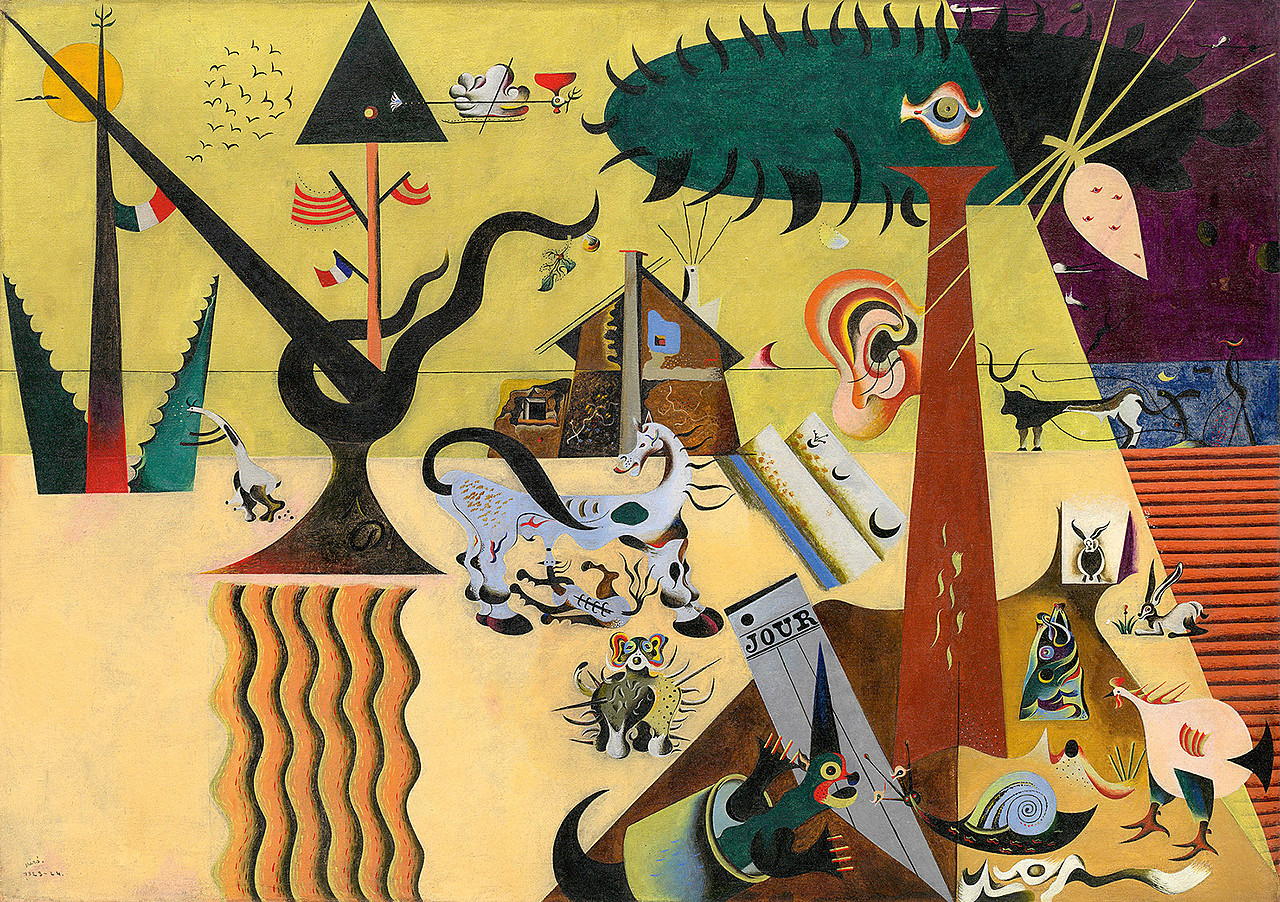
Joan Miró was born on April 20, 1893, in Barcelona, Spain. He was a Catalan painter who combined Surrealist fantasy with abstract art. He worked in lithography, produced murals, sculptures and tapestries.

Miró’s father worked as a goldsmith and watchmaker. Early on, Miró attended a commercial college, then worked two years as an office clerk. In 1912 he went on to participate in an art school in Barcelona.
From 1915 to 1919, Miró worked in Spain, Barcelona, Montroig, and on the island of Majorca. During this time, he painted landscapes, portraits, and nudes. His primary focus was on the interplay of volumes and areas of colour. He experimented with the Fauvist style – bold and colourful- and tended to rely heavily on geometric shapes. This could be an influence taken from the work of the Cubist artists and Paul Cezanne.

In the early 1920s, Miró moved to Spain and Paris. During this time, he went through a period of experimentation with mediums and techniques. He played with the limits of painting and used materials like unprimed canvases, flocked paper, cardboard, copper and Masonite, paintings based on collage, and so-called drawing collages, and constructions and objects. He combined detailed realism with abstract landscapes. An example of this can be found in the Farm (1921) and The Tilled Field (1924).

From 1925 to 1928, he took influence from Dadaists and Surrealists. Miró painted imaginary landscapes and pictures that looked like a dream.
When looking at his art, I almost get a sense of nostalgia. Not because I have seen his art before but because it has a very childlike, playful feeling. It’s very random and abstract but still makes sense.

November 29, 2021 at 5:14 pm
Smantha,
Very nice work on Joan Miro! You have solid background information combined with personal thoughts into his work which is much appreciated.
Your PK on Claude Lorrain was equally as good. I like your take on his time in Rome and how it influenced his painting. Possibly your delivery was a wee bit awkward but as with many students, it is understandable when they are not that familiar with public speaking. Anyhow I’m giving you a 2/2 on your most recent blog post and an 8/10 for the PK. Well Done!
Jeff